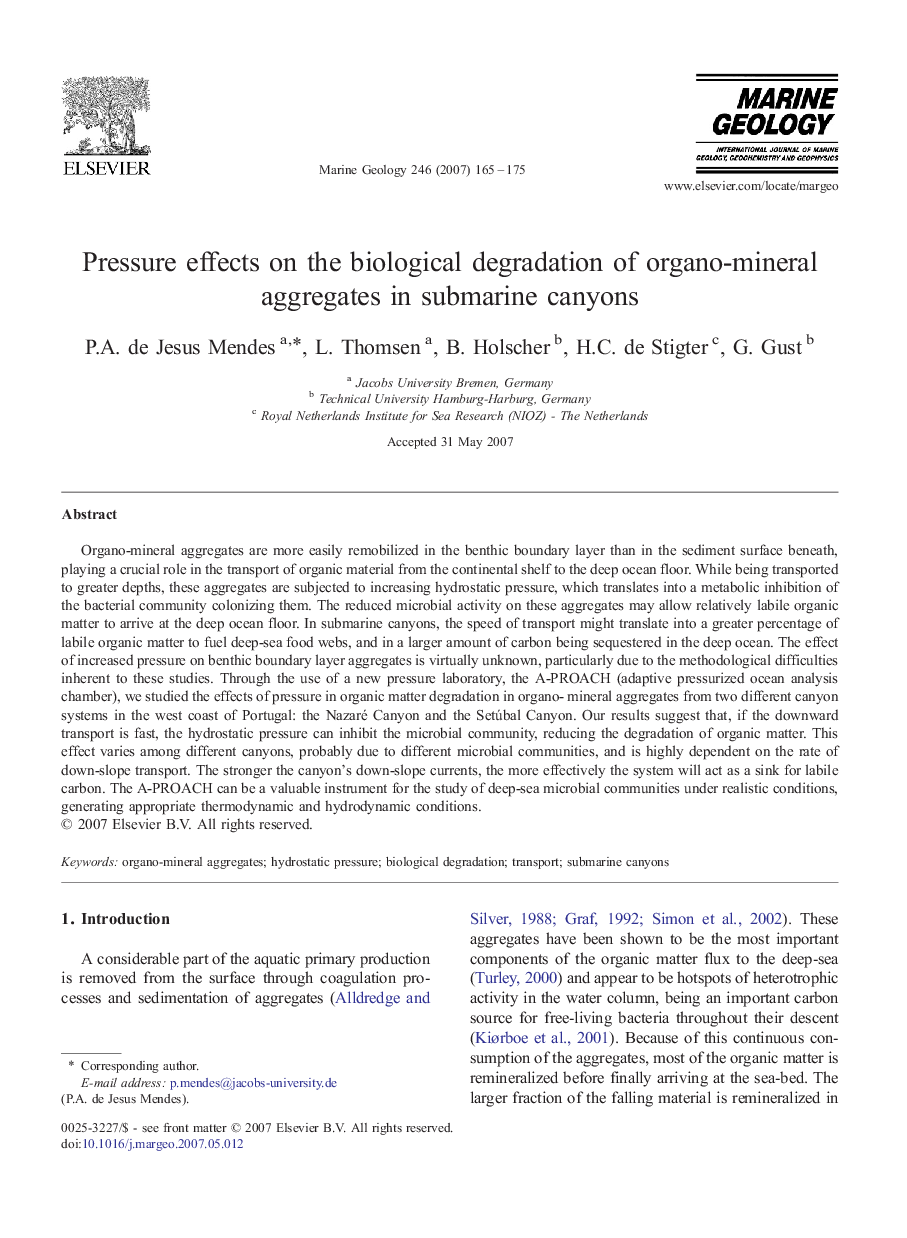| Article ID | Journal | Published Year | Pages | File Type |
|---|---|---|---|---|
| 4719487 | Marine Geology | 2007 | 11 Pages |
Organo-mineral aggregates are more easily remobilized in the benthic boundary layer than in the sediment surface beneath, playing a crucial role in the transport of organic material from the continental shelf to the deep ocean floor. While being transported to greater depths, these aggregates are subjected to increasing hydrostatic pressure, which translates into a metabolic inhibition of the bacterial community colonizing them. The reduced microbial activity on these aggregates may allow relatively labile organic matter to arrive at the deep ocean floor. In submarine canyons, the speed of transport might translate into a greater percentage of labile organic matter to fuel deep-sea food webs, and in a larger amount of carbon being sequestered in the deep ocean. The effect of increased pressure on benthic boundary layer aggregates is virtually unknown, particularly due to the methodological difficulties inherent to these studies. Through the use of a new pressure laboratory, the A-PROACH (adaptive pressurized ocean analysis chamber), we studied the effects of pressure in organic matter degradation in organo- mineral aggregates from two different canyon systems in the west coast of Portugal: the Nazaré Canyon and the Setúbal Canyon. Our results suggest that, if the downward transport is fast, the hydrostatic pressure can inhibit the microbial community, reducing the degradation of organic matter. This effect varies among different canyons, probably due to different microbial communities, and is highly dependent on the rate of down-slope transport. The stronger the canyon's down-slope currents, the more effectively the system will act as a sink for labile carbon. The A-PROACH can be a valuable instrument for the study of deep-sea microbial communities under realistic conditions, generating appropriate thermodynamic and hydrodynamic conditions.
